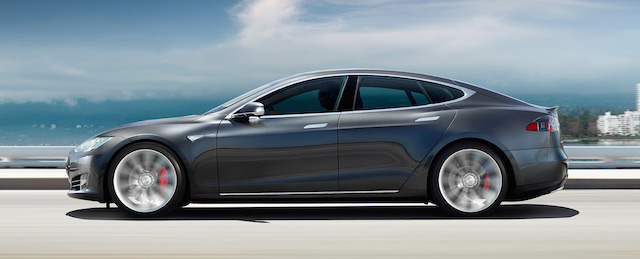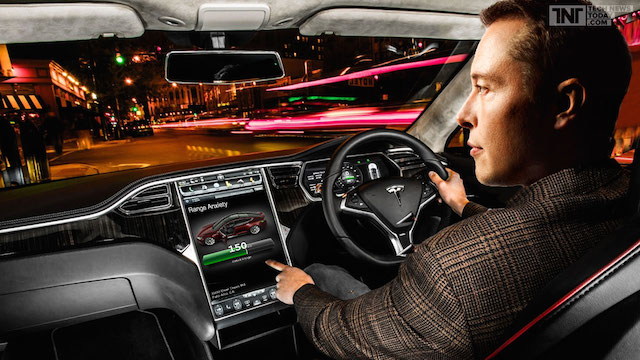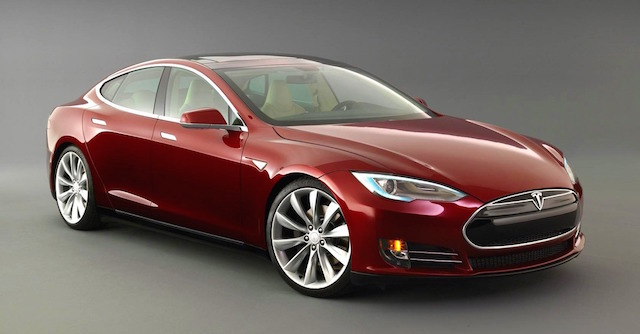
Buy a Tesla and you get to use transit lanes – that’s the incentive the US electric carmaker wants city councils in New Zealand to put in place to hasten the adoption of zero-emission EVs.
Tesla began negotiating with Auckland Transport administrators about such a dispensation long before it handed over the first public shipment of Tesla Model S sedans to their NZ owners last week.
It is understood talks are continuing with other NZ cities, too, although Tesla’s Australian and New Zealand communications manager Heath Walker wouldn’t be drawn on the subject.
“Tesla’s mission is to accelerate the world’s transition to sustainable energy, including transportation,” Walker said.
“As such, we are always working with government to see where we can work together to advance the adoption of electric vehicles.”
Getting central and local governments to allow EV owners to use transit lanes would be a victory of sorts for EV carmakers and lobbyists, who have never managed to get NZ governments to hasten the take-up of EVs with monetary incentives, such as tax credits or subsidies.
Transport Minister Simon Bridges last year outlined some incentives in a Government move to have 64,000 EVs on the road by 2021. That would mean a doubling of sales of EVs each year for the next five years. Bridges said NZ was the most electric-ready country in the world.

But the incentives pale compared to those put in place by Norway, the EV leader. Norway is aiming towards a zero emissions fleet of cars, buses and light commercials by 2025 and its government exempts most plug-in hybrid and EVs from sales tax and registrations fees.
That makes EVs price-competitive with conventional cars. It also gives EV drivers access to commuter lanes, free parking in most cities, and exempts them from most ferry and bridge tolls.
Norway has more EVs per head of population than any other country. Upwards of 30 per cent of new car sales are EVs, a figure double that of the runner-up, the Netherlands.
Meantime, apart from its Model S sedans, Tesla launched a series of ‘firsts’ in New Zealand – its first retail outlet and service centre, in Auckland’s Karangahape Rd, and its first Powerwall 2 and Powerpack 2 battery storage units for residential and commercial dwellings.
Both energy-independent units will be available to order online and allow home or business owners to store energy during the day to use during peak hours at night or during an emergency. Certified contractors will handle installation.
The fast-charge station is in Hamilton and will be followed by other such units further down the North Island and, later, in the South Island. Other stations with single- or three-phase charging will be set up throughout NZ, at places like shopping centres, hotels and public car parks.

The Supercharger can recharge the lithium-ion batteries in the Tesla Model S sedan and upcoming Tesla Model X SUV in around 30 minutes. The premium Model S has a range of upwards of 600km.
Model S starts in price at NZ$113,300 for the rear-drive 60 kWh battery pack and its 408km range. The 75kWh rear-drive Model S costs $126,800 (490km) and the all-wheel-drive 90kWh version (557km) is $149,700.
The top-range Model S, the all-wheel-drive P100D sedan, is the “fastest four-door ever built’, says Tesla. Its two electric motors – one on the front axle, one on the rear – propel it from 0-100km/h in a claimed 2.8 seconds. Range of the P100D ($217,000) is said to be 613km.
The SUV Model X is notable for its ‘falcon wing doors’ and comes with the choice of five, six, or seven seats. It sprints to 100km/h in 3.2 seconds and on to a top speed of 250km/h. Tesla claims it is the first electric vehicle with a towing capacity of 2.2 tonnes. Depending on battery pack – 75kWh, 90kWh, 100kWh – it ranges in price in NZ from $145,200 to $224,500.
The third Tesla car, the mid-sized Model 3 sedan, goes into production in the US later this year and isn’t likely to be available in NZ until 2018-19.
